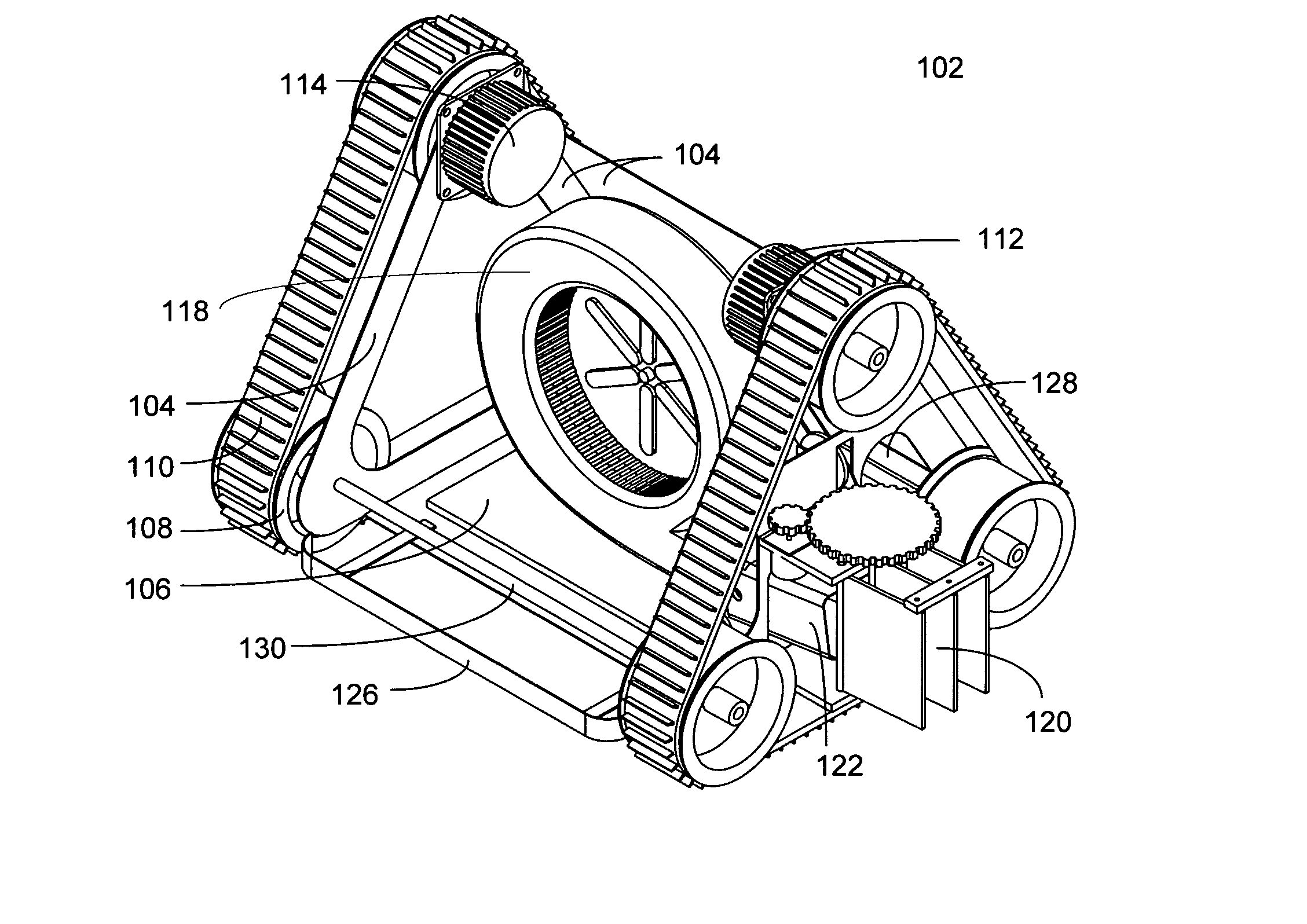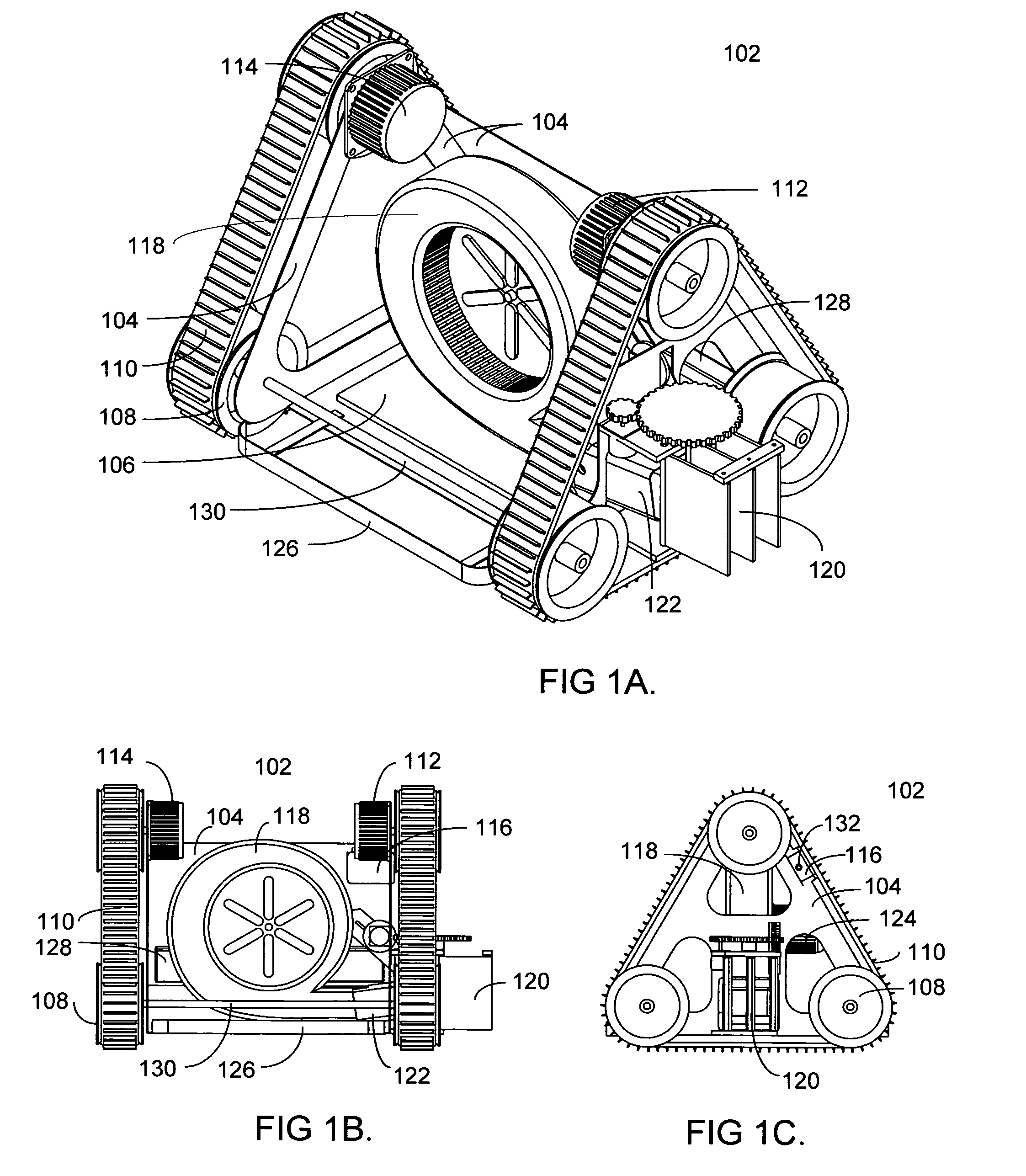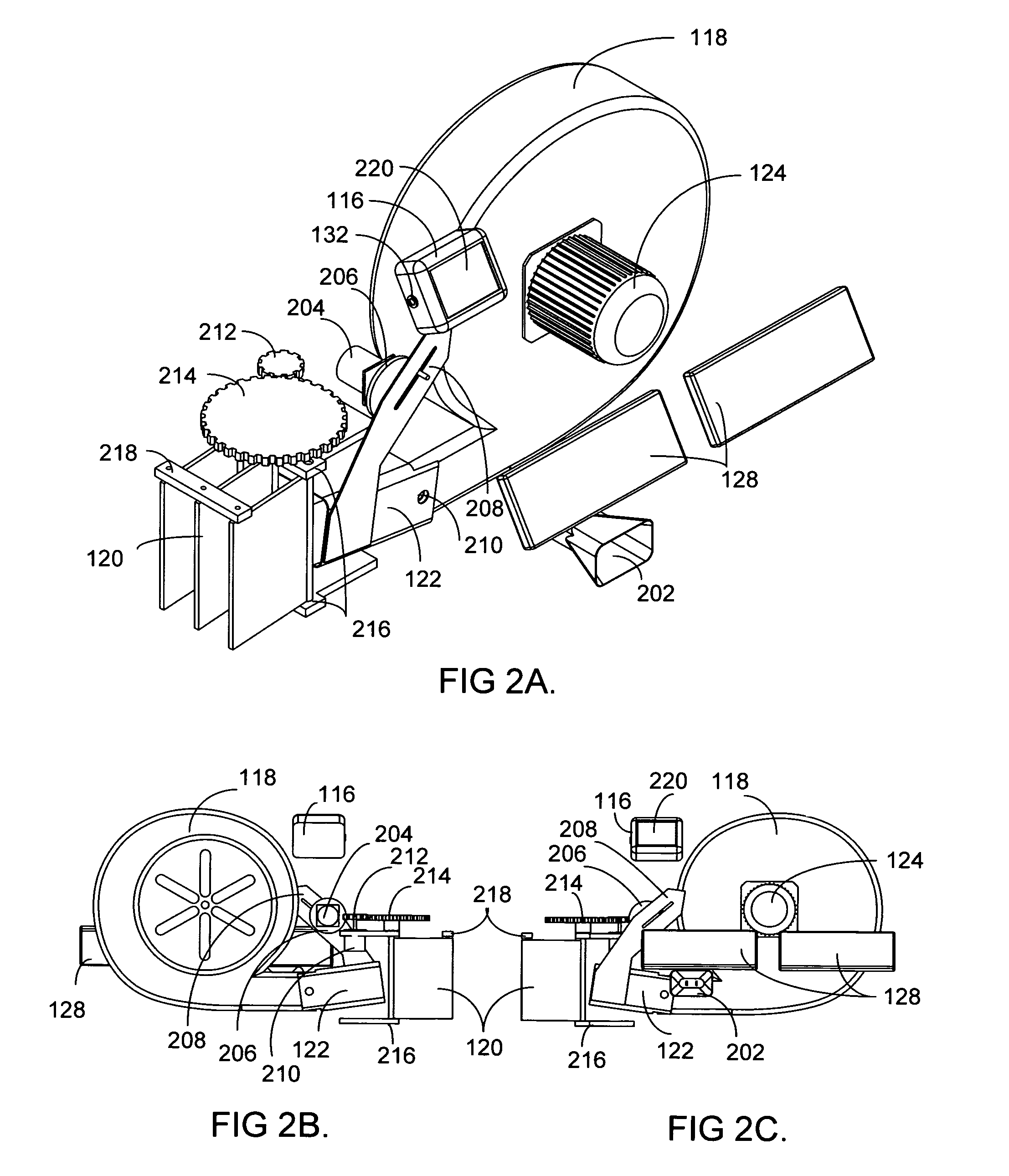Autonomous blower for debris herding
a technology of autonomous blowing and debris, which is applied in the direction of turf growing, navigation instruments, instruments, etc., can solve the problems of significantly more problems in the blowing technique of an automated technique than in the field of autonomous blowing of debris herding
- Summary
- Abstract
- Description
- Claims
- Application Information
AI Technical Summary
Benefits of technology
Problems solved by technology
Method used
Image
Examples
Embodiment Construction
[0019]As shown in FIG. 1A, an autonomous blower (102) comprises a chassis (104) or frame of stamped and welded metal. A counterweight (106) may be incorporated to lower the center of mass, as well as to resist the thrust of the exhausting air. Six wheels (108) on axles (13) are incorporated in this preferred embodiment for moving the chassis about on two independent tracks or belts (110). A first stepper motor (112) drives the front belt, and a second stepper motor (114) drives the rear belt. The symmetric design of this preferred embodiment allows the chassis to move laterally, to spin in place, and to right itself if it flips over. An alternative preferred embodiment has one motor steering a steerable wheel and another motor driving a drive wheel. An alternative preferred embodiment has a first motor driving a first drive wheel, a second motor driving a second drive wheel, and an idler wheel.
[0020]A controller (116) is attached to the chassis (104). The controller comprises prefer...
PUM
 Login to View More
Login to View More Abstract
Description
Claims
Application Information
 Login to View More
Login to View More - R&D
- Intellectual Property
- Life Sciences
- Materials
- Tech Scout
- Unparalleled Data Quality
- Higher Quality Content
- 60% Fewer Hallucinations
Browse by: Latest US Patents, China's latest patents, Technical Efficacy Thesaurus, Application Domain, Technology Topic, Popular Technical Reports.
© 2025 PatSnap. All rights reserved.Legal|Privacy policy|Modern Slavery Act Transparency Statement|Sitemap|About US| Contact US: help@patsnap.com



